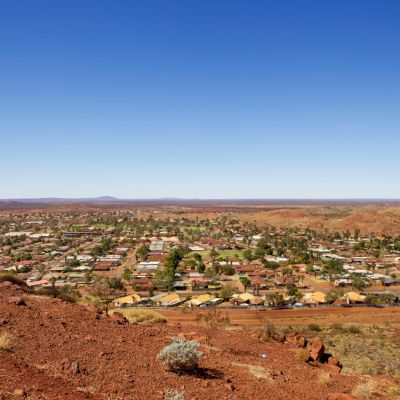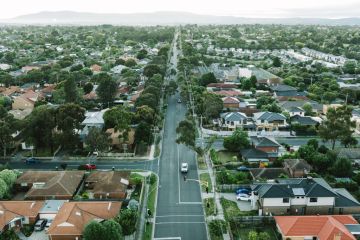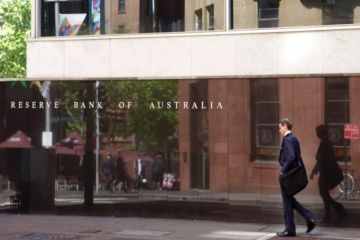RBA holds cash rate but economists are hopeful for a cut in early 2025
The Reserve Bank of Australia (RBA) has decided to hold the cash rate at 4.35 per cent again, despite a growing trend of cuts by the world’s central banks.
A statement released by the RBA on Tuesday said that inflation is easing but has been doing so “more slowly than previously expected and it remains high”.
“The Board expects that it will be some time yet before inflation is sustainably in the target range. While recent data have been mixed, they have reinforced the need to remain vigilant to upside risks to inflation,” the statement said.
“The path of interest rates that will best ensure that inflation returns to target in a reasonable timeframe remains uncertain and the Board is not ruling anything in or out.”
Many economists say they are not surprised by the RBA’s decision and believe a cut is unlikely to come until late this year or early 2025.
Canada and countries in Europe have begun their easing cycle, though their peaks were much higher than Australia’s 4.35 per cent and they currently have very high unemployment rates and lower inflation numbers, says Ray White chief economist Nerida Conisbee.
“Australian inflation is coming down but is remaining sticky,” she says. “April inflation came in at 3.6 per cent – still above the 2-3 per cent the RBA aims for.
“While the dominant commentary has been ‘higher for longer’, it has now switched to ‘less high for longer’. Australia will follow, likely sooner rather than later, and increasingly likely this year.”
The monthly consumer price index (CPI), an indicator of inflation, increased to 3.6 per cent, up 0.1 per cent from March. This is still above the RBA’s 2-3 per cent target but well below its December 2022 peak.
“Inflation has been relatively stable over the past five months, although this is the second month in a row where annual inflation has had a small increase,” says Australian Bureau of Statistics (ABS) head of prices statistics Michelle Marquardt.
Sean Langcake, head of macroeconomic forecasting at BIS Oxford Economics, says monthly CPIs are “quite noisy” and don’t always give a consistent reading on inflation compared to quarterly CPI figures.
“Certain things are included or excluded in the measurement from one month to the next, and you’re primarily looking at year-on-year growth rates, which tells you as much about what happened a year ago as what happened today,” he says.
In the April CPI monthly report, the ABS identified housing, food and fuel as some of the most significant contributors to the rise in inflation.
Unfortunately, the cash rate doesn’t strongly affect volatile items like fuel and food prices, so those inflationary drivers are ignored when making monetary policy, Langcake says.
“The RBA will likely pay more attention to the services side and the heat of the labour market,” he says.
Australia’s economy is slow at the moment, with the unemployment rate at 4 per cent and the Gross Domestic Product (GDP) only growing by 0.1 per cent in the last quarter.
Despite some fear of recession due to weak economic growth, Langcake says small growth is better than the economy going backwards.
“Australia is going to avoid that kind of technical recession … where the economy has two consecutive quarters of negative growth,” he says. “Q1 and Q2 this year are probably going to be about the worst of it in terms of how growth goes.
“If we’ve clocked in 0.1 per cent growth in Q1 then we should start to get a bit more support from fiscal policy in the second half of the year, which should boost growth a little bit.”
Domain chief of research and economics Dr Nicola Powell says having a long period with stable rates is a good outcome for Australians.
“Earlier rate cuts do have risks, because what that could do is ignite housing activity and create greater momentum in pricing, and in a sense that also has inflationary impacts,” she says.
| Sep 24 | Dec 24 | Mar 25 | Jun 25 | Sep 25 | Dec 25 | Mar 26 | |
| Westpac | 4.35% | 4.10% | 3.85% | 3.60% | 3.35% | 3.10% | – |
| NAB | 4.35% | 4.10% | 3.85% | 3.60% | 3.35% | 3.10% | 3.10% |
| CBA | 4.35% | 4.10% | 3.85% | 3.60% | 3.35% | 3.10% | – |
Although other countries have cut interest rates, Powell says it’s important to understand that the Australian economy differs vastly from places like the US, Canada and the EU.
“The cash rate is lower in Australia compared to some of our other counterparts globally,” she says.
“There are more people on variable rates [in Australia] than in the US. So that means if there is a movement in the cash rate, it flows through to those variable mortgage rates instantly, whereas if you’re in a fixed rate, it takes time to impact.”
Unlike Australia, where home loan rates can be fixed for up to five years, in the US, they can be locked in for as long as 30 years. In Canada, it can be up to 10 years.
Conisbee advises mortgage holders struggling with high interest rates to “keep holding on and just keep waiting” because there is a possibility for a cut late this year or in early 2025.
Mozo finance expert Rachel Wastell says that, despite the cash rate holding, “there’s a little bit of movement in the home loan space” as many smaller lenders are making cuts to their interest rates to stand out from the crowd.
“There are some opportunities for refinances,” she says. “If home owners are scared to go outside those big four [banks], there are some competitive rates available on the digital end.
“If you have that loyalty, or feel like you need to be with the big four [banks], the digital home loans they offer can give home owners a much lower rate if you can refinance.”
| Brand (backed by) | Digital home loan product | Variable rate (p.a.) | Comparison rate (p.a.) |
| Unloan (Commonwealth Bank) | Unloan Variable | 5.99% | 5.90% |
| Commonwealth Bank | Digi Home Loan | 6.19% | 6.32% |
| ubank (NAB) | Neat Home Loan | 6.19% | 6.21% |
| ANZ Plus (ANZ) | Home Loan Variable Rate | 6.14% | 6.15% |
| Up (Bendigo Bank) | Home Variable Rate | 5.95% | 5.95% |
| Tiimely (Bendigo Bank) | Variable Home Loan | 5.94% | 5.95% |
| Qantas Money Home Loans (Bendigo Bank) | Variable Home Loan | 6.08% | 6.15% |
| NRMA Home Loans (Bendigo Bank | Variable Home Loan | 6.08% | 6.15% |
For mortgage holders who are stuck and can’t refinance, Wastell suggests putting more money into an offset account to reduce the interest paid on the home loan in the meantime.
She doesn’t think there will be a rate cut soon, but believes that, when it does happen, lenders will pass the cut in full to mortgage holders and “that is something that home owners can look forward to”.
| Major bank | Home loan product | Variable rate (p.a.) | Comparison rate (p.a.) |
| Commonwealth Bank | Extra Home Loan | 6.79% | 6.80% |
| NAB | Base Variable Rate Home Loan | 6.84% | 6.88% |
| ANZ | Simplicity PLUS Special Offer | 6.64% | 6.64% |
| Bendigo Bank | Express Home Loan | 6.01% | 6.14% |
| Westpac | Flexi First Option Home Loan Special Offer | 6.54% for 2 years then 6.94% | 6.86% |
We recommend
We thought you might like
States
Capital Cities
Capital Cities - Rentals
Popular Areas
Allhomes
More










